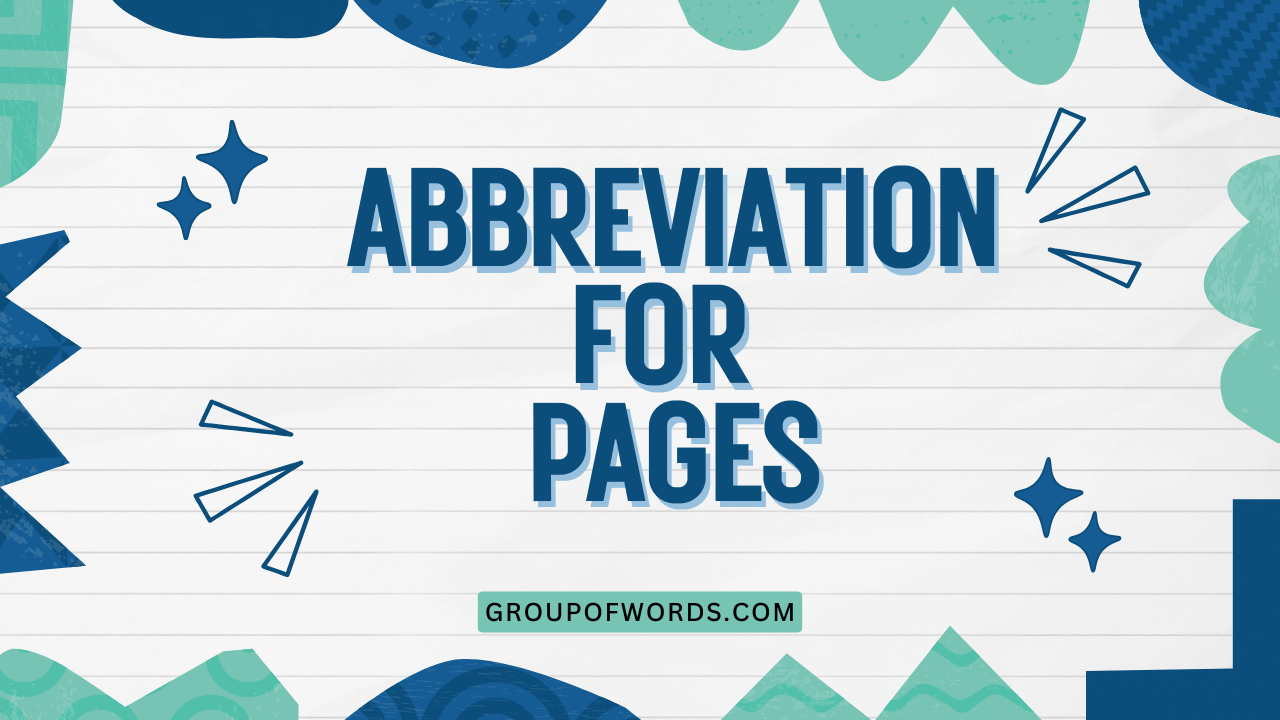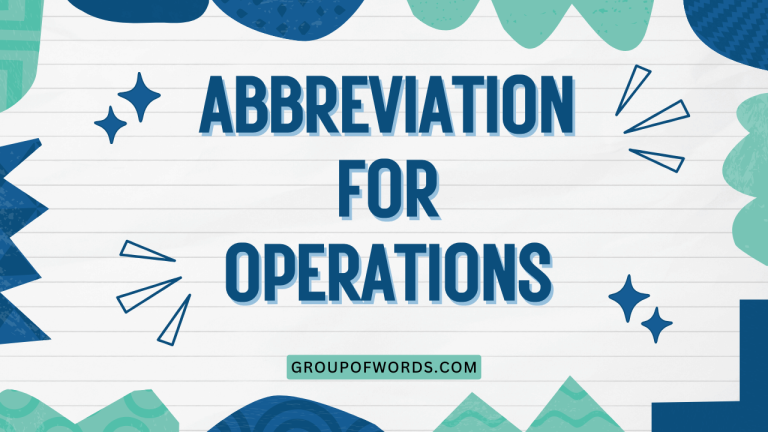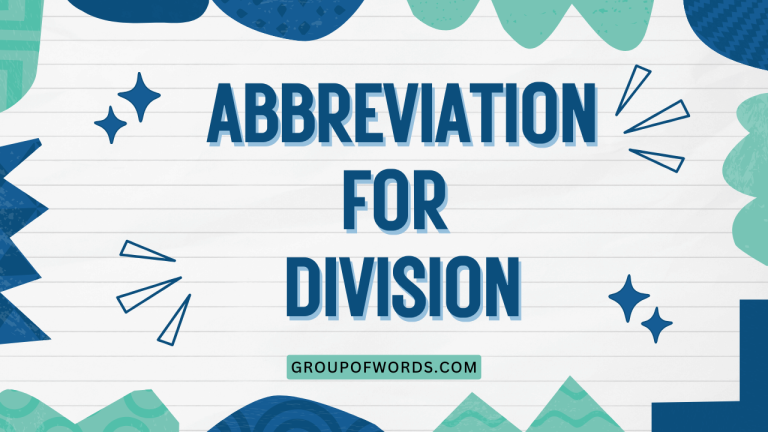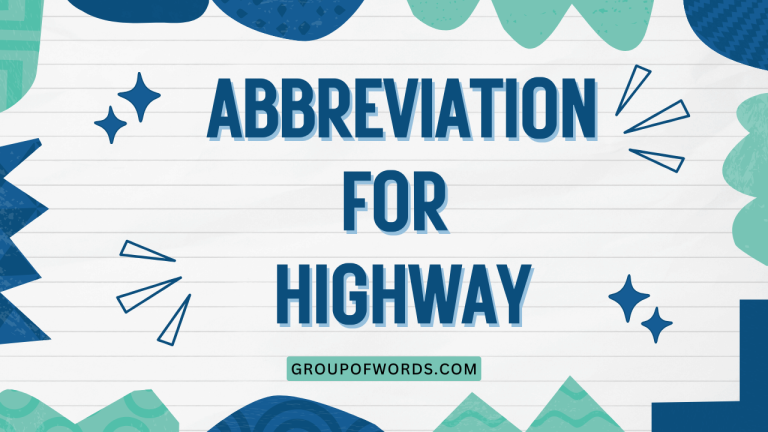Abbreviation for Pages: A Comprehensive Guide
Understanding the correct abbreviation for “pages” is crucial for academic writing, professional reports, and general communication. Using “p.” or “pp.” accurately ensures clarity and demonstrates attention to detail.
This guide provides a thorough explanation of the abbreviation, its usage, and common mistakes to avoid. Whether you’re a student, writer, or editor, mastering this simple grammatical point will enhance the credibility of your work.
Table of Contents
- Introduction
- Definition of ‘Pages’ and Its Abbreviation
- Structural Breakdown
- Types and Categories of Page References
- Examples of ‘p.’ and ‘pp.’ in Use
- Usage Rules for ‘p.’ and ‘pp.’
- Common Mistakes When Using ‘p.’ and ‘pp.’
- Practice Exercises
- Advanced Topics: Style Guides and Specific Cases
- Frequently Asked Questions
- Conclusion
Introduction
The abbreviations “p.” and “pp.” are commonly used to indicate page numbers in citations, footnotes, and bibliographies. While seemingly simple, their correct application requires a clear understanding of when to use the singular (“p.”) versus the plural (“pp.”).
This article aims to provide a comprehensive guide to using these abbreviations accurately, covering everything from basic definitions to advanced usage scenarios. Mastering this aspect of writing will contribute to the overall professionalism and credibility of your work.
This guide is designed for students, researchers, writers, editors, and anyone who regularly deals with referencing sources. By the end of this article, you will be able to confidently and correctly use “p.” and “pp.” in your writing, avoiding common errors and adhering to established style guidelines.
Definition of ‘Pages’ and Its Abbreviation
The word “page” refers to one side of a sheet of paper in a book, magazine, or other document. When referring to a single page, the abbreviation “p.” is used.
When referring to multiple pages, the abbreviation “pp.” is used. These abbreviations are essential for providing precise references to specific information within a text.
Definition of ‘p.’: Abbreviation for “page,” used when referring to a single page number.
Definition of ‘pp.’: Abbreviation for “pages,” used when referring to a range or multiple page numbers.
Understanding the distinction between these two abbreviations is fundamental to accurate referencing. Using the correct form ensures that readers can easily locate the information you are citing.
Structural Breakdown
The structure of using “p.” and “pp.” is quite simple, but adherence to the rules is important for clarity. The abbreviation is followed by the page number(s) being referenced.
A comma is often used to separate the abbreviation from other information in a citation, depending on the citation style being used.
Basic Structure:
- Singular Page: p. [page number]
- Multiple Pages: pp. [page number(s)]
For example: “p. 15” refers to page 15, while “pp. 15-20” refers to pages 15 through 20. The specific format may vary slightly depending on the style guide (e.g., MLA, APA, Chicago), but the core principle remains the same.
Types and Categories of Page References
Page references can be categorized based on the number of pages being referenced and the context in which they are used. Understanding these categories helps ensure accurate and consistent usage.
Single Page References
This refers to citing a single, specific page within a document. The abbreviation “p.” is used in this case, followed by the page number.
For instance, “p. 42” indicates a reference to page 42.
Multiple Page References
When referencing more than one page, the abbreviation “pp.” is used. This can refer to a range of pages (e.g., “pp. 10-15”) or to a non-sequential list of pages (e.g., “pp. 20, 25, 30”).
The specific format depends on the context and the citation style.
Page Ranges
A page range indicates a continuous sequence of pages. The abbreviation “pp.” is followed by the starting and ending page numbers, separated by an en dash (–).
For example, “pp. 50–55” refers to pages 50 through 55.
Non-Sequential Pages
Sometimes, you may need to reference specific pages that are not consecutive. In this case, “pp.” is used, followed by a list of the page numbers, separated by commas.
For example, “pp. 10, 25, 40” refers to pages 10, 25, and 40.
Page References in Bibliographies
In bibliographies, page references typically indicate the total number of pages in a book or article. This information helps readers understand the scope of the work.
For example, “300 pp.” indicates that the book has 300 pages.
Examples of ‘p.’ and ‘pp.’ in Use
The following tables provide numerous examples of how “p.” and “pp.” are used in different contexts. These examples are designed to illustrate the correct usage in various situations, including citations, footnotes, and bibliographies.
Each example includes a sentence and the corresponding page reference.
Examples of Single Page References (“p.”)
This table illustrates the use of “p.” when citing a single page in various sentences. The table includes 30 examples with different sentence structures and contexts.
| Sentence | Page Reference |
|---|---|
| The author discusses the impact of climate change on coastal communities. | p. 25 |
| This concept is further elaborated in the following chapter. | p. 60 |
| As stated in the introduction, the purpose of this study is to… | p. 7 |
| The data suggests a strong correlation between these two variables. | p. 112 |
| Further details on the methodology can be found in the appendix. | p. 215 |
| The conclusion summarizes the main findings of the research. | p. 300 |
| This example illustrates the principle of supply and demand. | p. 45 |
| The theory is supported by empirical evidence. | p. 88 |
| The definition of the term “sustainability” is provided. | p. 15 |
| This argument is presented in detail in the third section. | p. 75 |
| The author provides a compelling critique of modern society. | p. 92 |
| The historical context is essential to understanding the events. | p. 18 |
| The research findings are presented in a clear and concise manner. | p. 135 |
| The statistical analysis supports the hypothesis. | p. 250 |
| The case study provides a real-world example of the concept. | p. 63 |
| The author’s personal experiences are reflected in this chapter. | p. 28 |
| The ethical implications of the research are discussed. | p. 175 |
| The limitations of the study are acknowledged. | p. 200 |
| The recommendations for future research are outlined. | p. 310 |
| See the discussion on the role of education in social mobility. | p. 52 |
| The author mentions several related studies. | p. 192 |
| This is a critical point to remember. | p. 33 |
| The author argues that the current policy is ineffective. | p. 77 |
| The research builds upon previous work in the field. | p. 11 |
| The author expresses an opposing view. | p. 210 |
| The text provides a general overview on the topic. | p. 13 |
| The author highlights the problems with the current system. | p. 66 |
| The text presents a new perspective on the issue. | p. 100 |
| The author suggests several solutions to the problem. | p. 166 |
| The summary of the article is well-written and concise. | p. 255 |
Examples of Multiple Page References (“pp.”)
This table illustrates the use of “pp.” when citing a range or multiple pages in various sentences. The table includes 30 examples with different sentence structures and contexts.
| Sentence | Page Reference |
|---|---|
| The arguments are presented in detail in the second chapter. | pp. 30-45 |
| The research methodology is outlined in the appendix. | pp. 210-225 |
| The results of the study are summarized in the following section. | pp. 100-115 |
| For more information on this topic, see the following pages. | pp. 50-60 |
| The author discusses the implications of these findings. | pp. 75-80 |
| The historical background is provided in the introduction. | pp. 10-20 |
| This concept is explored in greater depth in the next chapter. | pp. 120-130 |
| The examples are drawn from a variety of sources. | pp. 150-160 |
| The data is analyzed using statistical methods. | pp. 180-190 |
| The discussion covers a wide range of issues. | pp. 200-210 |
| See the author’s analysis of the political situation. | pp. 25-35 |
| The author further elaborates on the theory. | pp. 40-50 |
| The case studies are presented in detail. | pp. 60-70 |
| The author provides a comprehensive overview. | pp. 80-90 |
| The research findings are discussed in the conclusion. | pp. 90-100 |
| The author cites a number of relevant studies. | pp. 100-110 |
| The discussion covers a wide range of topics. | pp. 110-120 |
| The author analyzes the impact of the policy. | pp. 120-130 |
| The research examines the relationship between the two variables. | pp. 130-140 |
| The author presents a new approach to the problem. | pp. 140-150 |
| The author challenges the conventional wisdom. | pp. 150-160 |
| The book provides a detailed account of the events. | pp. 160-170 |
| The author explores the complexities of the issue. | pp. 170-180 |
| The research offers a new perspective on the topic. | pp. 180-190 |
| The author provides a critical assessment of the situation. | pp. 190-200 |
| The book examines the historical context of the events. | pp. 200-210 |
| The author delves into the intricate details of the subject matter. | pp. 210-220 |
| The research uncovers several surprising findings. | pp. 220-230 |
| The author presents a thought-provoking analysis of the issue. | pp. 230-240 |
| The book offers a comprehensive overview of the field. | pp. 240-250 |
Examples of Mixed Use of “p.” and “pp.”
This table illustrates the combined use of “p.” and “pp.” when citing both single pages and page ranges in the same sentence or reference. The table includes 20 examples with different sentence structures and contexts.
| Sentence | Page Reference |
|---|---|
| For a detailed explanation, see p. 25 and pp. 40-45. | p. 25, pp. 40-45 |
| The author discusses this concept on p. 10 and provides examples on pp. 50-55. | p. 10, pp. 50-55 |
| The main argument is presented on p. 30, with supporting evidence on pp. 70-75. | p. 30, pp. 70-75 |
| See p. 112 for the definition and pp. 150-155 for further discussion. | p. 112, pp. 150-155 |
| The data is summarized on p. 200, and the full analysis can be found on pp. 250-255. | p. 200, pp. 250-255 |
| The introduction starts on p. 5, and the main chapters run from pp. 20-100. | p. 5, pp. 20-100 |
| The conclusion is on p. 300, and relevant data is on pp. 150-200. | p. 300, pp. 150-200 |
| The first example is on p. 15, and more examples can be found on pp. 60-65. | p. 15, pp. 60-65 |
| The theory is introduced on p. 40, and the empirical evidence is on pp. 80-85. | p. 40, pp. 80-85 |
| The definition is on p. 20, and the applications are discussed on pp. 75-80. | p. 20, pp. 75-80 |
| The historical context is on p. 18, with further details on pp. 33-38. | p. 18, pp. 33-38 |
| The research findings are on p. 135 and the implications on pp. 140-145. | p. 135, pp. 140-145 |
| The statistical analysis is on p. 250, with tables on pp. 260-265. | p. 250, pp. 260-265 |
| See the case study on p. 63 and related studies on pp. 70-75. | p. 63, pp. 70-75 |
| The author’s experiences are on p. 28, and broader perspectives on pp. 40-45. | p. 28, pp. 40-45 |
| The ethical implications are on p. 175, and future directions on pp. 180-185. | p. 175, pp. 180-185 |
| The limitations are on p. 200, and potential solutions on pp. 210-215. | p. 200, pp. 210-215 |
| The recommendations are on p. 310, and a summary on pp. 315-320. | p. 310, pp. 315-320 |
| The role of education is discussed on p. 52, and social mobility on pp. 60-65. | p. 52, pp. 60-65 |
| The author challenges the status quo on p. 42 and offers alternative options on pp. 88-93. | p. 42, pp. 88-93 |
Usage Rules for ‘p.’ and ‘pp.’
There are several key rules to follow when using “p.” and “pp.” to ensure accuracy and consistency in your writing.
- Use “p.” for a single page: When referring to a specific page, use “p.” followed by the page number (e.g., p. 25).
- Use “pp.” for multiple pages: When referring to a range of pages or multiple non-sequential pages, use “pp.” (e.g., pp. 30-45 or pp. 10, 20, 30).
- Use an en dash for page ranges: When indicating a range of pages, use an en dash (–) between the starting and ending page numbers (e.g., pp. 50–55).
- Separate non-sequential pages with commas: When listing non-sequential pages, separate the page numbers with commas (e.g., pp. 10, 25, 40).
- Follow the style guide: Adhere to the specific guidelines of the citation style you are using (e.g., MLA, APA, Chicago). These guides may have specific rules regarding the use of “p.” and “pp.”
- Consistency is key: Maintain consistency throughout your document in the way you use these abbreviations.
These rules are essential for maintaining clarity and professionalism in your writing. Failure to follow them can lead to confusion and detract from the credibility of your work.
Common Mistakes When Using ‘p.’ and ‘pp.’
Even experienced writers sometimes make mistakes when using “p.” and “pp.” Here are some common errors to watch out for, along with corrected examples.
| Incorrect | Correct | Explanation |
|---|---|---|
| The information is on pages 25. | The information is on p. 25. | Using “pages” instead of “p.” when referring to a single page. |
| See page 30-35 for more details. | See pp. 30-35 for more details. | Omitting “pp.” when referring to a range of pages. |
| p. 10-15 | pp. 10-15 | Using “p.” instead of “pp.” for a range of pages. |
| pp 20, 30, 40 | pp. 20, 30, 40 | Missing the period after “pp.” |
| pp. 50 – 55 | pp. 50–55 | Using a hyphen instead of an en dash for page ranges. |
| p. 10, 20, 30 | pp. 10, 20, 30 | Using “p.” instead of “pp.” for multiple non-sequential pages. |
| Pages. 42 | p. 42 | Incorrect capitalization and full word used instead of abbreviation. |
| pp.45-50 | pp. 45–50 | Missing space after the abbreviation and incorrect dash. |
| Page 77 | p. 77 | Using the full word “Page” instead of the abbreviation. |
| pp. 10 – 12 | pp. 10–12 | Incorrect spacing and dash usage. |
By being aware of these common mistakes, you can avoid them and ensure that your writing is accurate and professional.
Practice Exercises
Test your understanding of “p.” and “pp.” with these practice exercises. For each sentence, identify the correct page reference.
Exercise 1: Identifying Correct Page References
Choose the correct page reference for each sentence.
| Question | Option A | Option B | Option C | Answer |
|---|---|---|---|---|
| The definition is on page 15. | p. 15 | pp. 15 | page 15 | A |
| The examples are on pages 20-25. | p. 20-25 | pp. 20-25 | pages. 20-25 | B |
| See pages 10, 20, and 30 for more details. | p. 10, 20, 30 | pp. 10, 20, 30 | page 10, 20, 30 | B |
| The summary is on page 100. | pp. 100 | p. 100 | Page 100 | B |
| The conclusion is on pages 150-155. | p. 150-155 | pp. 150–155 | pages 150-155 | B |
| The first example is on page 77. | pp. 77 | p 77 | p. 77 | C |
| The supporting evidence is on pages 88-93. | p. 88-93 | pp. 88 – 93 | pp. 88–93 | C |
| See the following on page 42. | pp 42 | p. 42 | page 42 | B |
| The related content is on pages 192-198. | p. 192-198 | pp. 192-198 | pages 192 – 198 | B |
| The important note is on page 33. | p. 33 | pp. 33 | page 33 | A |
Exercise 2: Correcting Incorrect Page References
Identify and correct the incorrect page references in the following sentences.
| Question | Corrected Answer |
|---|---|
| The information is on pages 42. | The information is on p. 42. |
| See page 50-55 for more details. | See pp. 50-55 for more details. |
| p. 60-65 contains the additional details. | pp. 60-65 contains the additional details. |
| pp 70, 80, 90 provides more context. | pp. 70, 80, 90 provides more context. |
| pp. 112 – 118 offer supporting details. | pp. 112–118 offer supporting details. |
| p. 12, 22, 32 outlines the key points. | pp. 12, 22, 32 outlines the key points. |
| Pages. 135 has the main result. | p. 135 has the main result. |
| pp.140-145 provides supporting analysis. | pp. 140–145 provides supporting analysis. |
| Page 250 shows the statistical significance. | p. 250 shows the statistical significance. |
| pp. 166 – 172 examines the ethical questions. | pp. 166–172 examines the ethical questions. |
Advanced Topics: Style Guides and Specific Cases
While the basic rules for using “p.” and “pp.” are straightforward, advanced usage involves understanding how different style guides treat these abbreviations and handling specific cases that may arise.
Style Guide Variations
Different style guides, such as MLA, APA, and Chicago, may have slightly different rules regarding the use of “p.” and “pp.” For example, some style guides may require omitting “p.” or “pp.” altogether when the context is clear. Always consult the specific style guide you are using to ensure compliance.
Omitting “p.” or “pp.”
In some cases, it may be acceptable to omit “p.” or “pp.” when the context makes it clear that you are referring to page numbers. This is more common in informal writing or when the page numbers are integrated seamlessly into the text.
However, in formal academic writing, it is generally best to include the abbreviations for clarity.
Using “f.” and “ff.”
The abbreviations “f.” (for “and the following page”) and “ff.” (for “and the following pages”) are sometimes used to indicate that the information continues on the subsequent page(s). However, these abbreviations are less common in modern writing, and it is generally preferred to use a specific page range (e.g., “pp. 25-26”).
Frequently Asked Questions
Here are some frequently asked questions about using “p.” and “pp.”
- When should I use “p.” versus “pp.”?
Use “p.” when referring to a single page number. Use “pp.” when referring to a range of page numbers or multiple, non-sequential page numbers.
- Do I need to include a period after “p.” and “pp.”?
Yes, both “p.” and “pp.” are abbreviations and should be followed by a period.
- What type of dash should I use for page ranges?
Use an en dash (–) to indicate a range of pages (e.g., pp. 50–55). Do not use a hyphen (-).
- How do I cite non-sequential pages?
Use “pp.” followed by the page numbers, separated by commas (e.g., pp. 10, 25, 40).
- Do different style guides have different rules for “p.” and “pp.”?
Yes, different style guides (e.g., MLA, APA, Chicago) may have slightly different rules. Always consult the specific style guide you are using.
- Can I omit “p.” or “pp.” in my writing?
In some informal contexts, it may be acceptable to omit “p.” or “pp.” However, in formal academic writing, it is generally best to include the abbreviations for clarity.
- What do “f.” and “ff.” mean, and when should I use them?
“f.” means “and the following page,” and “ff.” means “and the following pages.” While they can be used, it’s generally better to specify a page range (e.g., pp. 25-26) for clarity.
- Is it ever correct to write out the full word “page” or “pages” in a citation?
While it’s generally preferred to use the abbreviations “p.” and “pp.” in formal citations, there might be specific contexts (e.g., certain types of informal communication) where writing out the full word “page” or “pages” is acceptable. However, for academic or professional writing, stick to the abbreviations for consistency and clarity.
Conclusion
Understanding the proper use of “p.” and “pp.” is essential for clear and accurate writing. By following the rules and guidelines outlined in this article, you can ensure that your page references are correct and consistent.
Remember to use “p.” for single pages, “pp.” for multiple pages, and an en dash for page ranges. Always consult the specific style guide you are using for any additional requirements.
Mastering these simple abbreviations will enhance the credibility of your work and make it easier for readers to locate the information you are citing. With practice and attention to detail, you can confidently use “p.” and “pp.” in all your writing endeavors.
Continue to review examples and practice exercises to solidify your understanding and avoid common mistakes.






